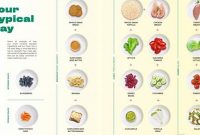If you are looking for a delectable treat that is both healthy and indulgent, look no further than this incredible recipe for delicious pomegranate jelly with less sugar. Made with the sweet and tangy flavors of pomegranate, this jelly is perfect for spreading on toast, adding to yogurt, or even using as a glaze for meats. The best part? This recipe uses less sugar than traditional jellies, so you can enjoy all the flavor without the guilt. Get ready to indulge in a burst of fruity goodness with every bite.

Understanding Pomegranate Jelly
Pomegranate jelly has a long and rich history, dating back thousands of years. This delicious fruit spread is made from the juice of pomegranates, which are known for their vibrant red color and sweet-tart flavor. Pomegranate jelly has gained popularity among health-conscious individuals due to its natural ingredients and minimal use of sugar.
The pomegranate fruit itself has been revered for its health benefits since ancient times. It is packed with antioxidants, vitamins, and minerals that can boost your immune system and promote overall well-being. The high levels of polyphenols in pomegranates have been linked to reducing inflammation, improving heart health, and even preventing certain types of cancer.
In addition to its health benefits, pomegranate jelly is also a versatile ingredient in the kitchen. Its rich flavor pairs well with both sweet and savory dishes, making it a favorite among chefs and home cooks alike. Whether spread on toast, drizzled over ice cream, or used as a glaze for meat or vegetables, pomegranate jelly adds a burst of flavor to any meal.
When it comes to making pomegranate jelly, one of the key considerations is the sugar content. Many store-bought jellies and jams are loaded with added sugars, which can be detrimental to your health. However, with this delicious homemade recipe, you can enjoy the natural sweetness of pomegranates with much less sugar.
Benefits of Pomegranate Jelly
Pomegranate jelly offers a range of benefits for both your taste buds and your health. Here are some key advantages of incorporating this delightful spread into your diet:
- Rich in antioxidants: Pomegranates are packed with antioxidants that help fight inflammation and protect against cellular damage.
- Boosts immune system: The vitamins and minerals in pomegranates can strengthen your immune system, helping to ward off illnesses and infections.
- Supports heart health: The polyphenols in pomegranates have been shown to lower blood pressure and reduce the risk of heart disease.
- Improves digestion: Pomegranate jelly contains natural fibers that can promote healthy digestion and prevent constipation.
Nutritional Value of Pomegranate Jelly
Pomegranate jelly is not only delicious but also nutritious. Here is a breakdown of its key nutrients:
| Nutrient | Amount per Serving (1 tablespoon) |
|---|---|
| Calories | 40 |
| Carbohydrates | 10g |
| Sugar | 8g |
| Fiber | 1g |
| Vitamin C | 2mg |
| Potassium | 40mg |
Note: The nutritional values may vary depending on the specific recipe and ingredients used.
Choosing the Right Pomegranate Variety
When making pomegranate jelly, it is important to choose the right variety of pomegranates. Some pomegranate varieties are sweeter and more flavorful than others, which can greatly impact the taste of your jelly. Here are a few popular pomegranate varieties to consider:
- Wonderful: This is the most commonly available variety, known for its vibrant red color and sweet-tart flavor.
- Grenada: Grenada pomegranates have a deep red color and a rich, sweet flavor.
- Haku Botan: Originating from Japan, Haku Botan pomegranates are large and have a mild, juicy taste.
Choosing the right variety can enhance the flavor and overall enjoyment of your homemade pomegranate jelly.
In conclusion, pomegranate jelly is a delicious and nutritious spread that has gained popularity among health-conscious individuals. Its long history and numerous health benefits make it a popular choice in the kitchen. By using the right pomegranate variety and reducing the sugar content, you can enjoy this flavorful jelly guilt-free. So why not give it a try and add pomegranate jelly to your next meal?
The Low Sugar Advantage
When it comes to making pomegranate jelly, opting for a low sugar recipe has its advantages. Not only does it enhance the taste, but it also provides numerous health benefits. By reducing the sugar content, you can enjoy a guilt-free indulgence that is both delicious and nutritious.
Health Benefits of Low Sugar Pomegranate Jelly
Lower sugar content in pomegranate jelly means reduced calorie intake, which can help in maintaining a healthy weight. This is particularly beneficial for individuals who are conscious about their calorie consumption.
By using less sugar in your pomegranate jelly recipe, you can also reduce the risk of developing various health issues associated with high sugar intake, such as obesity, diabetes, and cardiovascular diseases.
Pomegranates are packed with antioxidants, vitamins, and minerals that can boost your immune system and overall health. By opting for a low sugar recipe, you can better retain these beneficial nutrients and enjoy a healthier jelly.
Impact of Sugar on Pomegranate Jelly Texture
Sugar plays a crucial role in the texture of pomegranate jelly. It helps in providing thickness and stability to the jelly mixture. However, using too much sugar can lead to an overly sweet jelly with a syrupy consistency.
With a low sugar jelly recipe, you can achieve a jellied texture that is just right – not too firm or too runny. This allows the jelly to spread smoothly and evenly, making it perfect for spreading on toast or using as a topping for desserts.
Using Alternative Sweeteners in Pomegranate Jelly
If you prefer a sweeter taste without the excess sugar, there are alternative sweeteners that can be used in pomegranate jelly recipe.
Stevia, a natural sweetener derived from the Stevia rebaudiana plant, is a popular choice for those looking to reduce their sugar intake. It is significantly sweeter than sugar and has zero calories.
Another option is honey, which adds a unique flavor profile to the jelly. However, it is important to note that honey has a higher calorie content compared to sugar, so it should be used sparingly.
Agave nectar, maple syrup, and coconut sugar are other alternatives that can be used in moderation to sweeten pomegranate jelly.
Overall, choosing a low sugar pomegranate jelly recipe not only benefits your health but also enhances the taste and texture of the jelly. By exploring alternative sweeteners, you can experiment with different flavors and enjoy a guilt-free indulgence. So go ahead, whip up a batch of delicious pomegranate jelly with less sugar and savor its delightful goodness!
Preparing Pomegranate Jelly
Are you ready to create a delicious pomegranate jelly with reduced sugar content? Follow these simple steps to achieve the perfect consistency and flavor that will leave your taste buds wanting more.
Extracting Pomegranate Juice
To begin, you’ll need to extract fresh pomegranate juice. Start by selecting ripe pomegranates that are firm and heavy for their size. Cut the fruit in half horizontally and hold one half over a bowl, cut side down. Use a wooden spoon to firmly tap the back of the pomegranate, releasing the seeds and juice. Repeat this process with all the pomegranate halves until you have enough juice for your recipe.
Note: Make sure to wear an apron or old clothes as pomegranate juice can stain!
Reducing Sugar Content in Pomegranate Juice
Once you have your fresh pomegranate juice, it’s time to reduce the sugar content. Traditional jelly recipes call for high amounts of sugar, but we’ll be using a reduced amount to create a healthier option without sacrificing flavor.
To reduce the sugar content, start by measuring your pomegranate juice. Pour it into a saucepan and heat it over medium heat until it starts to simmer. Allow it to simmer for about 10 minutes, stirring occasionally.
Note: Simmering the juice helps to evaporate some of the water content, resulting in a more concentrated flavor.
Next, measure out your reduced sugar. For every cup of pomegranate juice, you’ll want to add 1/2 cup of reduced sugar. Stir the reduced sugar into the simmering juice until it dissolves completely. Continue to simmer the juice and sugar mixture for another 10 minutes to further concentrate the flavors.
Note: The reduced sugar maintains the sweetness of the jelly while reducing the overall sugar content.
Adding Natural Gelling Agents for Desired Thickness
To achieve the desired thickness of your pomegranate jelly, you’ll need to add natural gelling agents. Most jelly recipes call for powdered pectin, but we’ll be using a more natural alternative.
One option is to use agar-agar, a vegetarian gelatin substitute derived from seaweed. Agar-agar can be found in most health food stores or online. Follow the package instructions for the correct ratio of agar-agar to liquid, as it may vary depending on the brand.
Note: Agar-agar provides the jelly with a firm texture and helps it set properly.
Another natural gelling agent you can use is chia seeds. Chia seeds absorb liquid and create a gel-like consistency when combined with liquids. For every cup of pomegranate juice, add 2 tablespoons of chia seeds. Stir well and allow the mixture to sit for about 15 minutes to allow the chia seeds to thicken the jelly.
Note: Chia seeds add nutritional value to the jelly, providing omega-3 fatty acids and fiber.
Now you have learned the step-by-step process of making pomegranate jelly with reduced sugar content. Extracting fresh pomegranate juice, reducing the sugar content, and adding natural gelling agents are key steps to achieve the perfect consistency and flavor. Enjoy your homemade pomegranate jelly that is both delicious and healthier!
Packaging and Storing Pomegranate Jelly
Discover the best practices for packaging and storing your homemade pomegranate jelly to ensure its freshness and extend its shelf life.
Choosing the Right Containers for Pomegranate Jelly
When it comes to packaging your delicious pomegranate jelly, choosing the right containers is essential. Opt for glass jars or containers with airtight lids to preserve the flavor and freshness of the jelly. Glass containers are ideal as they do not react with the acids present in the jelly, ensuring that the flavors remain intact and uncontaminated.
Remember, the right container plays a significant role in maintaining the taste profile of your pomegranate jelly.
Sealing and Labeling Pomegranate Jelly Jars
Properly sealing and labeling your pomegranate jelly jars is crucial for both convenience and safety. After filling the jars with the jelly mixture, ensure that the lids are tightly sealed to prevent any air from entering or any leakage that could lead to spoilage. Label each jar with the date of preparation to keep track of its freshness and the recipe name for easy identification.
Don’t forget to seal those jars tight and label them correctly to maintain your pomegranate jelly’s quality and track its preparation date.
Proper Storage Conditions for Pomegranate Jelly
The right storage conditions will help prolong the shelf life of your pomegranate jelly. Store the jars in a cool, dry place away from direct sunlight and excessive heat. The temperature should be consistent, preferably between 50°F and 70°F (10°C and 21°C). Avoid storing the jars near the stove or any other heat source that could affect the quality of the jelly. Additionally, it is important to keep the containers in an upright position to prevent the jelly from coming into contact with the lid, which may lead to spoilage.
️ Remember, a cool and dry environment is the key to maintaining the freshness and quality of your pomegranate jelly!
Note:
By following these best practices for packaging and storing your pomegranate jelly, you can enjoy its delicious taste for an extended period. Properly sealed containers, labeling, and careful storage conditions will ensure that your homemade jelly stays fresh and flavorful.
These tips will guide you in packaging and storing your homemade pomegranate jelly, giving you confidence in its quality and longevity. Remember, selecting the right containers, sealing and labeling them correctly, and storing the jelly in optimal conditions will enhance its shelf life and preserve its delectable taste. Enjoy every spoonful of your homemade, low-sugar pomegranate jelly!
Creative Uses for Pomegranate Jelly
Discover a myriad of innovative ways to incorporate pomegranate jelly into your meals and desserts, infusing them with a burst of delicious flavor. Whether you’re a fan of sweet or savory dishes, this versatile ingredient is sure to elevate your culinary creations.
Pomegranate Jelly as a Marinade
Add a tantalizing twist to your marinades by incorporating pomegranate jelly. Its sweet and tangy profile adds depth to your favorite proteins, such as chicken, pork, or even tofu. The jelly’s vibrant red color and sticky texture create a beautiful glaze that caramelizes during cooking, resulting in a delectable dish that will impress your guests.
To make a simple pomegranate jelly marinade, mix equal parts pomegranate jelly, soy sauce, and olive oil. Add minced garlic, a squeeze of lemon juice, and a pinch of black pepper for an extra kick. Marinate your choice of protein for at least an hour, allowing the flavors to penetrate the meat. Then, grill, roast, or pan-fry to perfection, producing a succulent and flavorful dish.
Pomegranate Jelly in Baked Goods
Baking enthusiasts will rejoice at the prospect of incorporating pomegranate jelly into their favorite treats. From muffins to cakes, the addition of this unique ingredient gives your baked goods a delightful and unexpected twist.
For a luscious pomegranate jelly-filled muffin, follow your favorite muffin recipe and add a teaspoon of pomegranate jelly to each mold before baking. The jelly will melt and blend into the batter, infusing each bite with its sweet and tart essence. Dust the finished muffins with powdered sugar and enjoy a tantalizing treat that will leave you craving more.
Pomegranate Jelly in Savory Dishes
Don’t limit your pomegranate jelly usage to desserts and marinades – it also shines in savory dishes. Its unique flavor profile adds a delightful contrast to rich and savory meals. ️
Next time you’re making a cheese board, consider pairing your selection of cheeses with a side of pomegranate jelly. The combination of creamy cheese, crunchy crackers, and the burst of sweetness from the jelly creates a harmonious palette of flavors. Alternatively, add a dollop of pomegranate jelly to your charcuterie platter, enhancing the flavors of cured meats and pickles.
Pomegranate jelly can also be used as a glaze for roasted vegetables. Toss your favorite veggies with olive oil, salt, and pepper, then brush them with pomegranate jelly before roasting. The jelly will caramelize in the oven, creating a glossy and flavorful coating that elevates the vegetables to new heights.
Unleash your creativity and explore the countless possibilities of incorporating pomegranate jelly into your cooking repertoire. Whether you’re experimenting with marinades, baking up a storm, or enhancing savory dishes, this versatile ingredient is sure to impress both your taste buds and your guests. Enjoy the burst of vibrant flavor that pomegranate jelly brings to your culinary creations! ️
Peanut Butter Cup Cookie Recipe
Frequently Asked Questions
Thank you for reading our article on low sugar pomegranate jelly recipe! Here are some frequently asked questions:
| No. | Questions | Answers |
|---|---|---|
| 1. | Can I reduce the amount of sugar in this pomegranate jelly recipe? | Absolutely! This recipe is specifically designed for those looking to reduce their sugar intake. By using alternative sweeteners or reducing the amount of sugar, you can still enjoy the delicious taste of pomegranate jelly with less sugar. |
| 2. | How long can I store homemade pomegranate jelly? | If stored properly in airtight containers, homemade pomegranate jelly can last up to a year. Make sure to clean the jars thoroughly before filling them with jelly and store them in a cool, dark place to maintain freshness. |
| 3. | Can I use frozen pomegranate seeds for this recipe? | Yes, frozen pomegranate seeds can be used to make this jelly. Just make sure to thaw them before processing. Frozen pomegranate seeds can retain their taste and nutritional value, making them a convenient option for year-round jelly making. |
| 4. | Can I add other fruits to the pomegranate jelly? | Absolutely! Feel free to experiment and add other fruits to enhance the flavor of your pomegranate jelly. Popular choices include raspberries, strawberries, or even citrus fruits like oranges or lemons. Just make sure to adjust the sugar and pectin quantities accordingly. |
| 5. | Can I use this pomegranate jelly as a topping for desserts? | Definitely! This low sugar pomegranate jelly can be a delightful topping for various desserts, such as cheesecakes, ice cream, or even toast. Its tangy and sweet flavor will elevate your dessert experience. |
| 6. | Can I double the recipe to make more pomegranate jelly? | Absolutely! If you want to make a larger batch of pomegranate jelly, simply double or triple the ingredients accordingly. Just make sure to adjust the cooking time and maintain the correct ratio of ingredients. |
Thank You for Reading!
We hope you enjoyed learning how to make your own low sugar pomegranate jelly. By reducing the amount of sugar, you can still enjoy the wonderful taste of pomegranates without compromising on health. Make sure to try this recipe for yourself and share it with your friends and family. Don’t forget to visit our website again for more exciting recipes and useful tips. Happy cooking! ️
Jump to Recipe
Pomegranate Jelly Recipe Low Sugar

Learn how to make a delicious low sugar pomegranate jelly with this easy recipe. Perfect for those who want to enjoy the taste of pomegranates without excessive sugar. Try it today!
- 2 cups pomegranate juice
- 1 cup sugar
- 1 lemon (juiced)
- 2 tablespoons pectin
- In a saucepan, combine pomegranate juice, lemon juice, and sugar. Heat over medium heat, stirring until the sugar has dissolved.
- Bring the mixture to a boil. Sprinkle pectin over the boiling mixture and continue stirring for 1 minute.
- Remove from heat and let the mixture cool for a few minutes. Skim off any foam that rises to the top.
- Pour the jelly into sterilized jars, leaving about 1/4-inch space at the top. Seal the jars tightly.
- Allow the jelly to cool completely at room temperature. It will thicken as it cools. Store in a cool, dark place.






